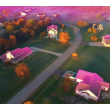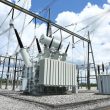FCC E911 location ruling the first step in journey to improved emergency-response times
By John Vetter, Sunsight Instruments
The Federal Communications Commission (FCC) should be commended for its recent unanimous ruling in favor of increased horizontal-axis location accuracy requirements for Wireless Enhanced 911 (E911) systems, and for providing guidance on a path to develop and implement vertical-axis solutions and requirements. The actions taken will better protect the citizenry and let first respond and react more quickly and efficiently to calls for assistance from mobile phones—an important element, considering three out of every four emergency calls are made using wireless devices. While the ruling is an important first measure, subsequent steps need to be taken for the emergency-response system to operate most efficiently and save more lives.
FCC rules for E911 require that confidence and uncertainty data be provided to public-safety answering points (PSAPs). Commercial Mobile Radio Service (CMRS) providers, or wireless carriers, must file their conformance verification procedures with the FCC, and the agency recommends periodic conformance testing.
Location solutions are split into two classes. Network location, which relies entirely on CMRS-provider infrastructure to determine location, can include Received Signal Strength (RSSI), Observed Time Difference of Arrival (Downlink OTDOA), Angle of Arrival (AoA), Multipath Fingerprinting, and combinations of these techniques. Handset location is dependent upon location information provided by, or cooperative analysis with, the user device. It can include techniques based on Global Positioning System (GPS) coordinates, assisted Global Positioning System (A-GPS), Enhanced Observed Time Difference (E-OTD), Enhanced Forward Link Triangulation (E-FLT, CDMA-only), and a combination of the aforementioned.
While market penetration of smartphones increases handset-location use, the continued presence of older GSM and CDMA devices requires that network-location techniques be available. It is estimated that 75% of the mobile phones in the U.S. still use legacy technologies (as of Q2 2014) that do not offer GPS, Wi-Fi, or Bluetooth. Additionally, smartphones with handset-location capability cannot provide location data, if a GPS lock cannot be obtained due to signal-blocking and signal-scattering situations—both of which are quite possible in dense urban areas.
This means that network location often is still needed to service E911 calls. The problem is that network-location techniques rely on accurate placement and alignment of provider infrastructure; unfortunately, that is not always the case.
Recorded location errors of 30–50 meters are not uncommon for tower antennas. Target location errors tend to be approximately twice the tower antenna location error. When the emergency call is made by someone capable of interacting with first responders, an error of up to 100 meters may result in an extended time to contact. If the call is made by a person unable to respond (e.g. a caller who loses consciousness after dialing 911), a 100-meter inaccuracy may be significant.
Improper tower antenna placement results in unfavorable hyperbolic geometries, especially in sparse suburban or rural areas, where tower antennas are distant and located along similar azimuths as observed from the handset. A location error of 15-30 meters could result in a handset location error of 500+ meters. An emergency call from a hiker fallen into a ravine or a car driven down an embankment may not be easily found, resulting in additional first responders being deployed and longer response times.













